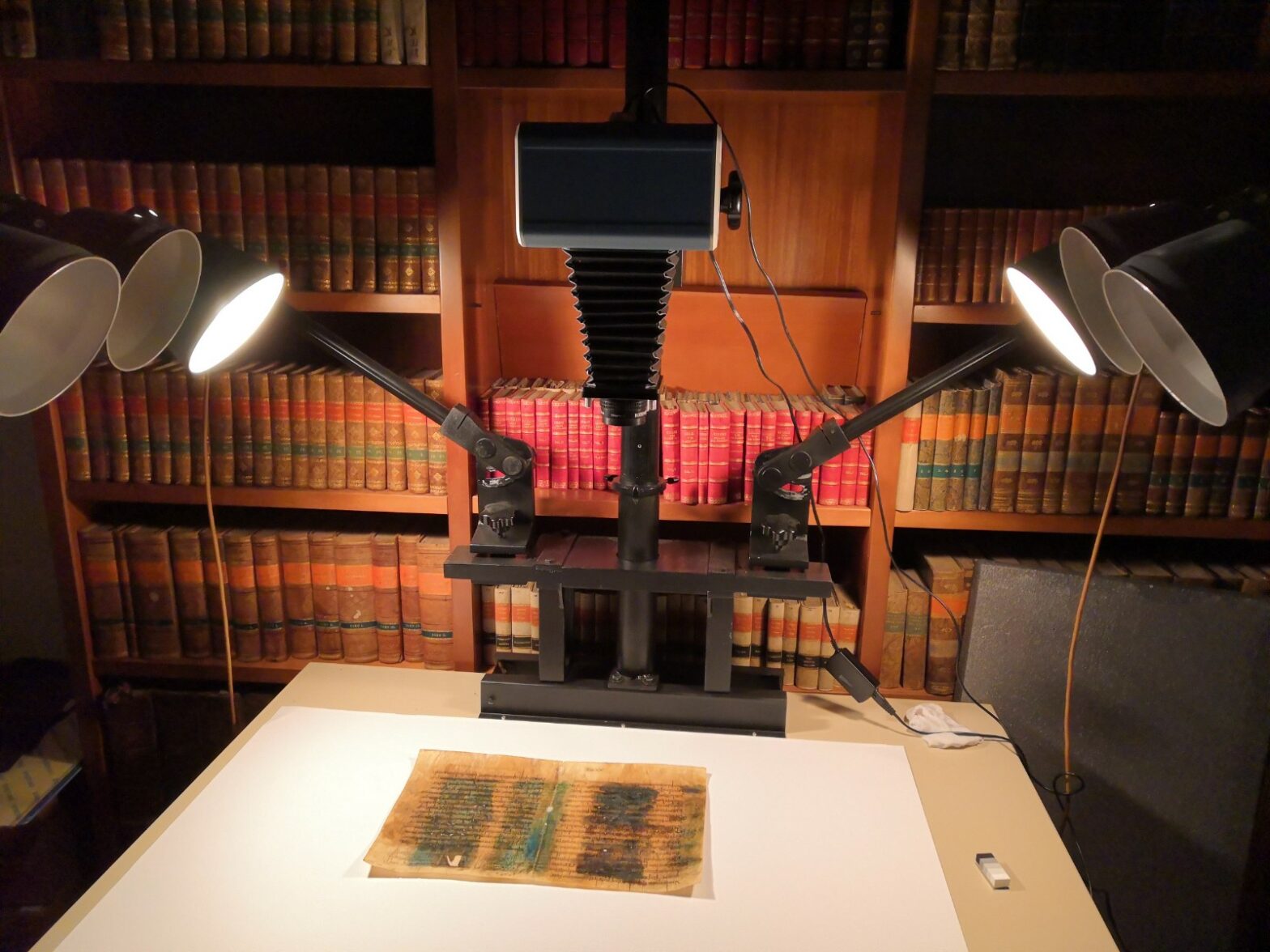As you may already know from the post titled “A series of unpredictable events”, the Biblioteca Capitolare of Verona, the oldest library still operating in the Western world, houses a significant number of palimpsests – i.e. manuscripts whose first layer of writing was scraped to allow their reuse – some in Latin, others in Greek. The former are by far the most famous, as they have been known since the early 19th century: the Gaius ms. XV (13) from the mid-6th century, containing an important legal handbook, and the ms. XL (38), some folios of which are overwritten and can be dated to the late 5th century. The latter bequeaths large portions of books III-VI of Livy’s History and the poetic works of Virgil. The use of chemical reagents by the first enthusiastic and blissfully unaware researchers working on these manuscripts in the 19th century (Niebuhr, Göschen, Bekker, Mai) produced serious damage to these palimpsests.
Within the framework of AntCom we are particularly interested in the marginal commentaries on Virgil, the ‘scholia’, that are here preserved in a unique version in ms. XL (38), but not only that. The features of the Virgilian text itself are paradoxically less known than the scholia, and we intend to study it by organizing a pioneering Citizen Science project that will involve high school students in Verona and the organization of a virtual exhibition of the manuscript. In a nutshell, restitution of historical-cultural heritage in a sustainable way: it does not get any more cutting edge than this…
And what about Greek? It is nested, in various forms, in our manuscripts: in ms. XL (38) it surfaces in the form of scattered notes on Livy; as far as Virgil is concerned, it appears in rhetorical terms and quotations from ancient authors (e.g. Homer and Theocritus) in the scholia, but also in the margins of ms. LXII (60), datable to the first half of the 6th century – this manuscript is the only original and official fragment of the Codex of Emperor Justinian. And, who knows, perhaps in the margins of other manuscripts yet to be investigated! The Capitolare also holds two Greek palimpsests, CXX (110) and CXXXIV (123), whose overwritten pages conceal fragments of at least five codices datable between the 10th and 12th centuries: we know very little about the contents, but they are promising to be of great interest for the history of literature and religion (e.g. fragments of saints’ lives, Church Fathers’ works, etc.).
Today hyper- and multispectral imaging allows non-invasive analyses of these invaluable artifacts of the late antique and medieval world that have survived precisely because they were … erased. Rather than being due to an act of “damnatio memoriae” – an age-old process of adaptation that might dub today “cancel culture” – this erasure was possibly due to a very down-to-earth need of writing material, of usable parchment… What’s certain is that the looming of a new era and new material conditions set in motion – once again! – an unpredictable chain of events, whose fortunate outcome are the palimpsests of the Capitolare.
These manuscripts will be the testing ground for the analyses of the Laboratory of Medieval and Dante Studies (LaMeDan), established at the Department of Cultures and Civilizations at the University of Verona: in February 2019 LaMeDan received substantial resources to purchase state of the art instrumentation and hire the necessary staff to support hyper- and multispectral field surveys. Can you imagine a better hunting ground? Refrain comfort zone lovers!


